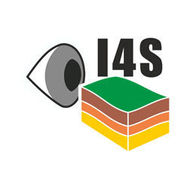Proximal gamma-ray spectrometry for site-independent in situ prediction of soil texture on ten heterogeneous fields in Germany using support vector machines (2017.0)
Heggemann T., Welp G., Amelung W., Angst G., Franz S., Koszinski S., Schmidt K., Pätzold S.
Soil and Tillage Research, 168 (), 99-109
doi:10.1016/j.still.2016.10.008
Abstract
Gamma spectrometric field measurements may provide high resolution information on topsoil texture. Yet, calibrations for the estimation of texture data usually have to be done site-specifically. The lack of site-independent calibrations thus limits the easy and universal use of proximal gamma-ray sensing in soil mapping and precision agriculture. Our objective was to develop a study site-independent prediction model for topsoil texture from gamma-ray spectra. We surveyed ten study sites across Germany with 417 reference samples (291 for calibration, 126 for test set-validation), providing soils from a broad range of parent materials and with widely varying soil texture. First, study site-specific models were calibrated by a linear regression approach. These models provided reliable estimations of sand, silt, and clay for most of the study sites. Second, study site-independent models were calibrated via i) linear regression and ii) support vector machines (SVM), the latter being mathematical methods of data pattern recognition. Based on the non-linear relationship between gamma spectrum and soil texture, which varied widely between the different parent materials the linear models are not appropriate for satisfactory soil texture prediction (averaged R2 of 0.73 for sand, 0.61 for silt, and 0.18 for clay and averaged absolute prediction errors of 9 to 5%, respectively). In contrast, the SVM calibrated prediction models revealed reliable performance also for site-independent calibrations. With the non-linear SVM approach we were able to include all sites in one single prediction model for each texture fraction although the different mineralogical composition of their parent materials led to complex and partly opposing relationships between gamma features and soil texture. Site-independent predictions via SVM were often even better than site-specific linear regression models. The site-independent SVM calibrated predictions yielded an averaged R2 of 0.96 (sand), 0.93 (silt), and 0.78 (clay), and corresponding averaged absolute prediction errors of 2 to 4%, respectively. To summarize, (i) non-linear prediction models are a feasible approach for capable site-independent texture estimations across a wide range of soils and (ii) gamma spectrometry-based texture predictions are a valuable input for applications that require highly resolved texture information at low costs and efforts.
